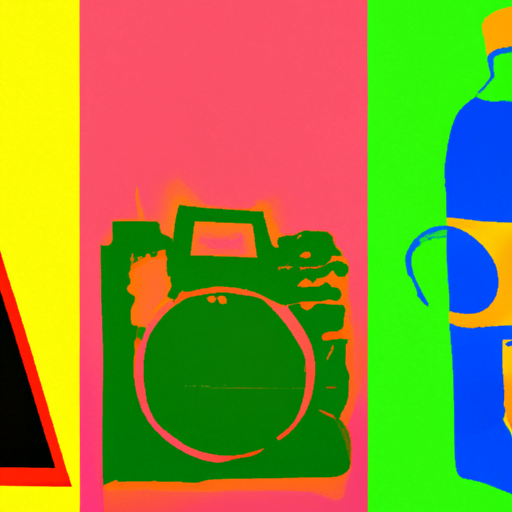
-
Table of Contents
- The Impact of Social and Environmental Issues on Graphic Design
- The Role of Graphic Design in Society
- Social Issues and Graphic Design
- Environmental Issues and Graphic Design
- Case Studies: Design for Social and Environmental Impact
- 1. The “I Am a Witness” Campaign
- 2. The “Love Has No Labels” Campaign
- 3. The “Trash Isles” Campaign
- The Future of Graphic Design and Social/Environmental Impact
- Conclusion
The Impact of Social and Environmental Issues on Graphic Design

Graphic design is a powerful tool that can shape perceptions, convey messages, and influence behavior. As society becomes more aware of social and environmental issues, graphic designers have a unique opportunity to contribute to positive change. This article explores the impact of social and environmental issues on graphic design, highlighting the role designers play in addressing these challenges and the potential for design to drive meaningful impact.
The Role of Graphic Design in Society
Graphic design is not just about creating visually appealing images; it is a form of communication that helps convey messages and ideas. Designers have the power to shape perceptions, influence behavior, and create awareness. They play a crucial role in shaping the visual identity of brands, organizations, and even social movements.
With the rise of social media and digital platforms, graphic design has become more accessible and influential than ever before. Designers can reach a global audience with their work, making it an effective tool for raising awareness and driving change.
Social Issues and Graphic Design
Social issues are pressing problems that affect individuals, communities, and societies as a whole. Graphic design can be a powerful tool for addressing these issues and creating positive social change. Here are some examples of how graphic design has been used to tackle social issues:
- Public Awareness Campaigns: Graphic designers often collaborate with non-profit organizations and government agencies to create public awareness campaigns. These campaigns aim to educate the public about important social issues such as climate change, gender equality, and mental health. Through compelling visuals and persuasive messaging, designers can engage and motivate people to take action.
- Social Justice Movements: Graphic design has played a significant role in social justice movements throughout history. From iconic protest posters to powerful visual symbols, designers have used their skills to amplify the voices of marginalized communities and advocate for equality and justice.
- Community Engagement: Graphic design can also be used to foster community engagement and empower individuals. Designers can create inclusive and accessible materials for community events, workshops, and educational programs. By making information visually appealing and easy to understand, designers can ensure that everyone has equal access to important resources and opportunities.
Environmental Issues and Graphic Design
Environmental issues, such as climate change and deforestation, are some of the most pressing challenges of our time. Graphic design can play a crucial role in raising awareness, promoting sustainable practices, and inspiring action. Here are some ways in which graphic design is making a positive impact on the environment:
- Sustainable Design Practices: Graphic designers are increasingly adopting sustainable design practices to minimize their environmental footprint. This includes using eco-friendly materials, reducing waste, and choosing energy-efficient production methods. By embracing sustainable design principles, designers can contribute to a more environmentally conscious industry.
- Environmental Campaigns: Graphic design is instrumental in creating visually compelling campaigns that raise awareness about environmental issues. From infographics to social media graphics, designers can distill complex information into visually engaging content that educates and motivates people to take action. For example, the “Save the Bees” campaign used graphic design to highlight the importance of pollinators and the threats they face.
- Product Packaging: Graphic design plays a significant role in product packaging, which can have a substantial environmental impact. Designers can advocate for sustainable packaging solutions, such as using recyclable materials and reducing excess packaging. By creating visually appealing and environmentally friendly packaging, designers can influence consumer behavior and promote sustainable consumption.
Case Studies: Design for Social and Environmental Impact
Several case studies demonstrate the power of graphic design in addressing social and environmental issues:
1. The “I Am a Witness” Campaign
The “I Am a Witness” campaign, created by the Ad Council and Goodby Silverstein & Partners, aimed to combat online bullying. The campaign used a simple yet powerful eye emoji as a visual symbol to encourage bystanders to speak up against bullying. The design was widely shared on social media and became a recognizable symbol of support for victims of online harassment.
2. The “Love Has No Labels” Campaign
The “Love Has No Labels” campaign, developed by the Ad Council and R/GA, aimed to promote inclusivity and acceptance. The campaign featured a video that showcased diverse couples, families, and friends behind a large X-ray screen. The design highlighted that love is blind to race, gender, and disability. The campaign received widespread attention and sparked conversations about diversity and inclusion.
3. The “Trash Isles” Campaign
The “Trash Isles” campaign, created by the Plastic Oceans Foundation and LadBible, aimed to raise awareness about plastic pollution in the oceans. The campaign involved creating a fictional country called the “Trash Isles” and petitioning the United Nations to recognize it as an official nation. The design included a flag, currency, and passports made from recycled plastic. The campaign garnered global attention and put the issue of plastic pollution in the spotlight.
The Future of Graphic Design and Social/Environmental Impact
As social and environmental issues continue to gain prominence, the role of graphic design in addressing these challenges will become even more critical. Designers have the power to shape perceptions, influence behavior, and drive positive change. Here are some trends that will shape the future of graphic design and its impact on social and environmental issues:
- Design Thinking: Designers are increasingly adopting a human-centered approach to problem-solving. Design thinking involves understanding the needs and perspectives of the target audience and designing solutions that address their specific challenges. By applying design thinking principles, designers can create more effective and impactful solutions for social and environmental issues.
- Data Visualization: With the abundance of data available, designers can play a crucial role in visualizing complex information. Data visualization helps make data more accessible and understandable to a wider audience. By creating visually engaging and informative graphics, designers can help people make informed decisions and take action.
- Collaboration and Co-creation: Addressing social and environmental issues requires collaboration across disciplines. Designers can work alongside scientists, policymakers, and community members to co-create solutions that are both visually appealing and effective. By bringing together diverse perspectives, designers can create more inclusive and impactful designs.
Conclusion
Graphic design has the power to shape perceptions, influence behavior, and drive positive change. By addressing social and environmental issues, designers can contribute to a more inclusive, sustainable, and equitable society. Through public awareness campaigns, social justice movements, and sustainable design practices, graphic designers have the opportunity to create meaningful impact. As the field of graphic design continues to evolve, designers must embrace new trends and approaches to
